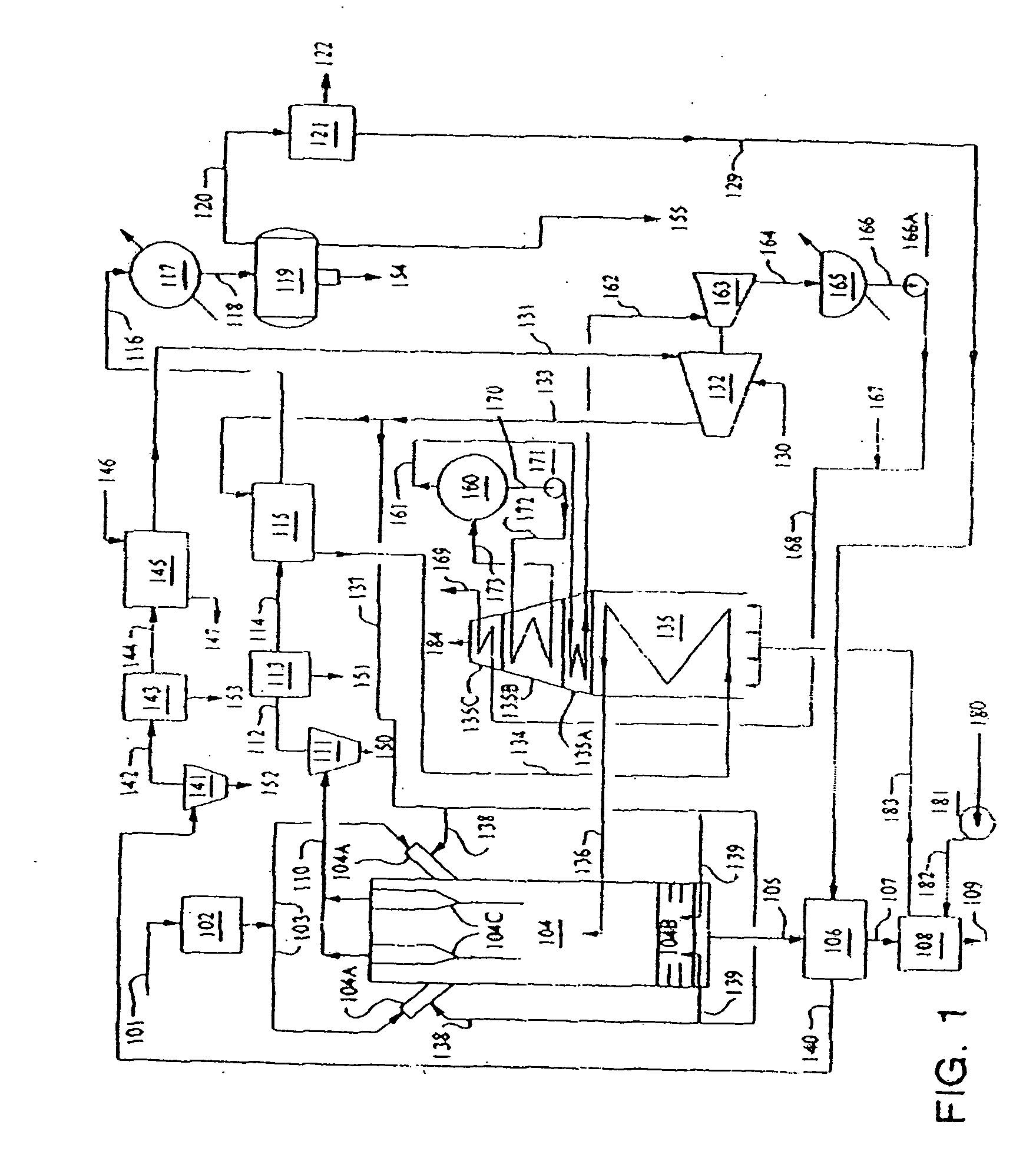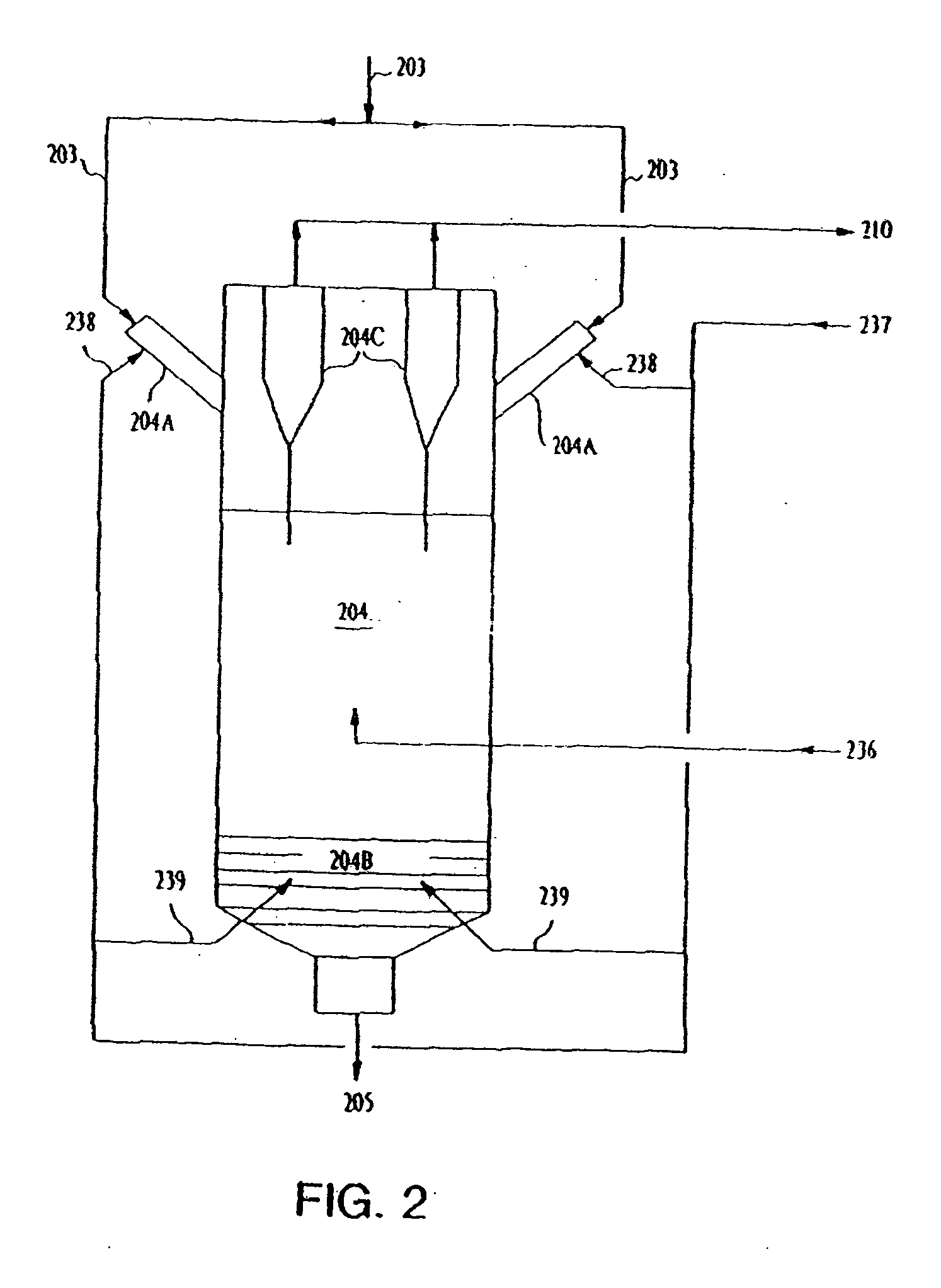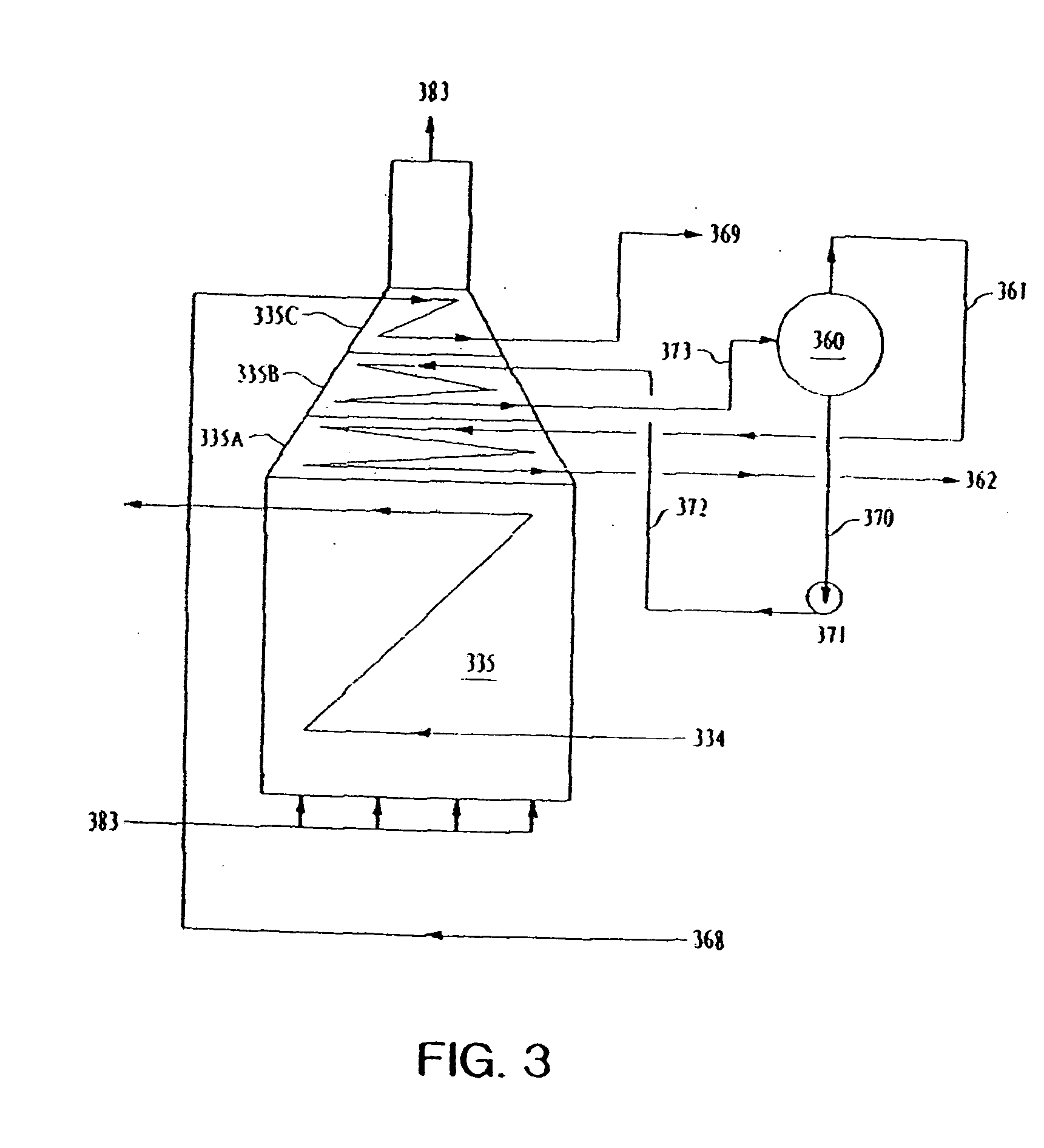Process and apparatus for converting oil shale or oil sand (tar sand) to oil
- Summary
- Abstract
- Description
- Claims
- Application Information
AI Technical Summary
Benefits of technology
Problems solved by technology
Method used
Image
Examples
example 1
[0149] The overall mass balance for the process according to the present invention is shown in FIG. 6, where 1000 tons / br of oil sand (tar sand) at 50° F. are reacted with hydrogen to produce 665 bbl / r of synthetic crude oil. The following Table provides the feed and product values for processing 1000 tons / hr. of oil sand (tar sand).
Raw Materials Products
[0150] 1000 TONS / HR. OIL SAND (TAR SAND) 665 BBL / HR SCO [0151] 1.6 MMSCF / HR HYDROGEN 5.2 MMSCF / HR STACK GAS [0152] 3.3 MMSCF / HR AIR 6600 LBS / HR SULFUR [0153] 0.5 MMSCF / HR NATURAL GAS 850 TONS / HR SPENT SAND
Reactor Dimensions and Mass and Energy Balances
Reactor 104[0154] Column Diameter 20.00 ft [0155] Cross Section Area 34.16 ft.sup.2 [0156] Void Fraction 0.85 (At Fluidization) [0157] Cross Section of Sand 47.12 ft.sup.2 [0158] Cross Section of Gas 267.04 ft.sup.2 [0159] Reactor Volume 27394.26 ft.sup.3 [0160] Bed Diameter 20.00 ft [0161] Bed Height 87.20 ft [0162] Time-Space Constant 0.25 hr [0163] Pressure Drop 35.00 psi [01...
example 2
[0422]FIG. 7 shows another embodiment of the present invention. In this embodiment, a oil sand (tar sand) feed is converted into a synthetic crude oil. Run of mine oil sand (tar sand) from trucks is dumped into receiving, screening, and sizing equipment 702 via tar sand feed 701 for classifying oil sand (tar sand) at ambient temperature. The oil sand (tar sand) comprises bitumen and sand. The oil sand (tar sand) is crushed into relatively large fluidizable pieces that are capable of passing through a one inch mesh, or that are about one inch or less in size. In this embodiment, crushing the oil sand (tar sand) into fines or pieces less than sand size is preferably avoided to facilitate fines removal from the product stream. Limiting the amount of crushing can also reduce heat generation that can adversely affect oil sand (tar sand) processing. Oil sand (tar sand) pieces typically comprise an agglomeration of sand particles, each sand particle surrounded by a film of water and an out...
example 3
[0606] The process illustrated in FIG. 7-6 and FIG. 7-7 encompasses an embodiment of the present invention in which PSA tail gas is recovered (“PSA tail gas recovery embodiment”). Reference characters are provided in FIG. 7-6 and FIG. 7-7 in which like reference characters match like reference characters in FIG. 7-4 and 7-5 and in the written description for like equipment. PSA tail gas can be burned for its heat value and / or can be recovered as feed for an integrated hydrogen plant. Reference characters are provided in FIG. 7-6 and FIG. 7-7 illustrating the PSA tail gas recycle process.
[0607] This PSA tail gas recovery embodiment of the process includes the PSA tail gas being fed to an integrated hydrogen plant. Feeding the PSA tail gas to an integrated hydrogen plant allows for the production of hydrogen from one or more of the light hydrocarbons which respectively can be present in the PSA tail gas including C1, C2, C3, C4 light hydrocarbons (such as methane and / or ethane). The ...
PUM
| Property | Measurement | Unit |
|---|---|---|
| size | aaaaa | aaaaa |
| temperature | aaaaa | aaaaa |
| temperature | aaaaa | aaaaa |
Abstract
Description
Claims
Application Information
 Login to View More
Login to View More - R&D
- Intellectual Property
- Life Sciences
- Materials
- Tech Scout
- Unparalleled Data Quality
- Higher Quality Content
- 60% Fewer Hallucinations
Browse by: Latest US Patents, China's latest patents, Technical Efficacy Thesaurus, Application Domain, Technology Topic, Popular Technical Reports.
© 2025 PatSnap. All rights reserved.Legal|Privacy policy|Modern Slavery Act Transparency Statement|Sitemap|About US| Contact US: help@patsnap.com



